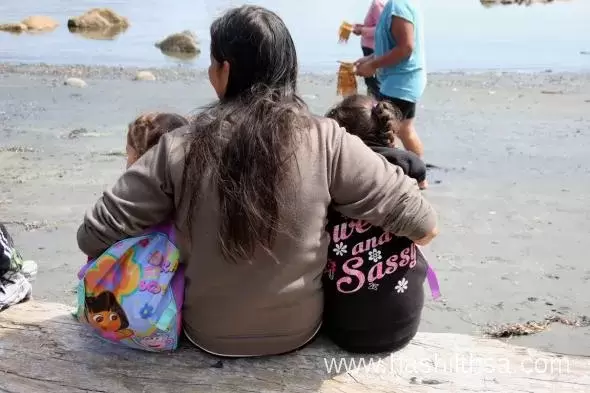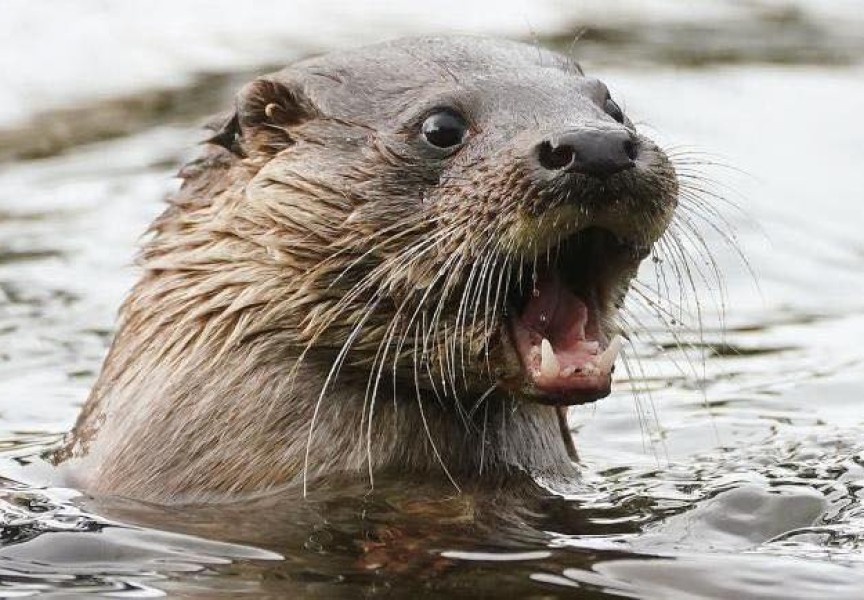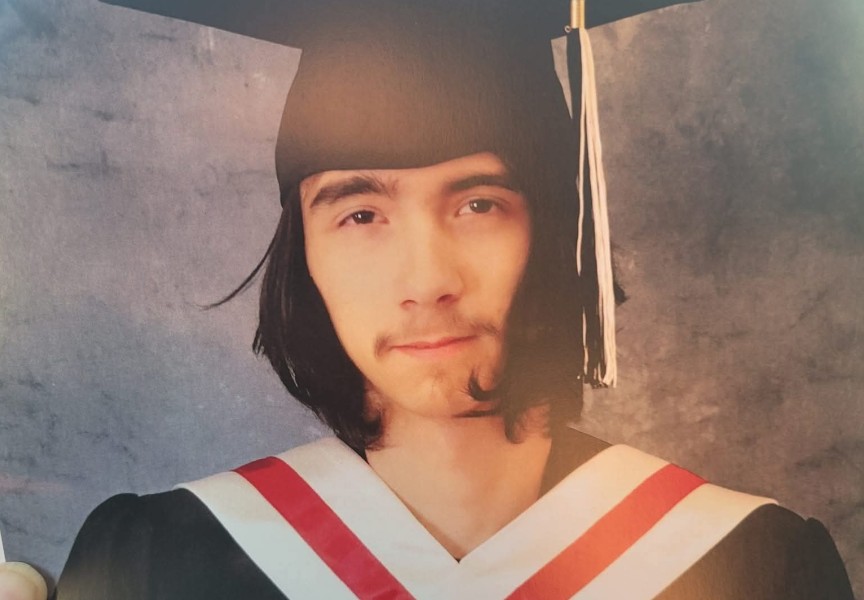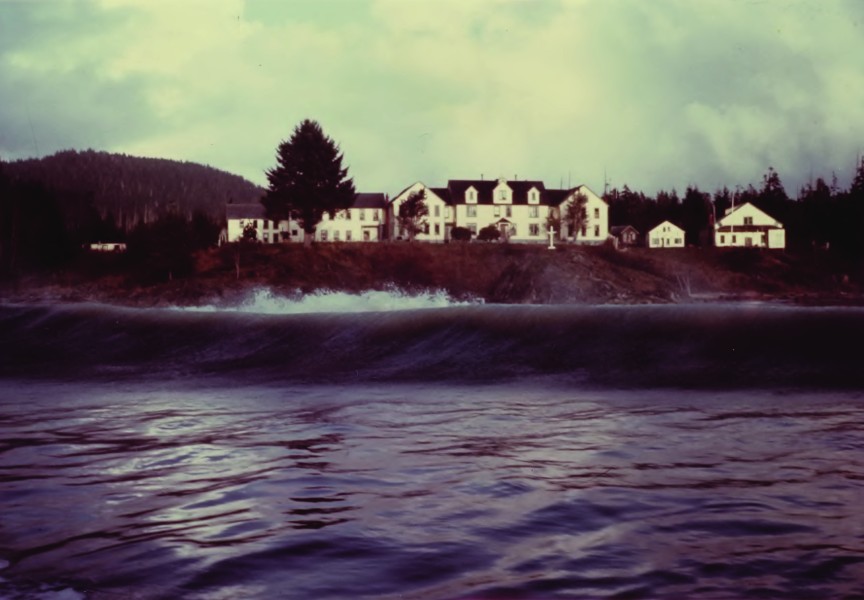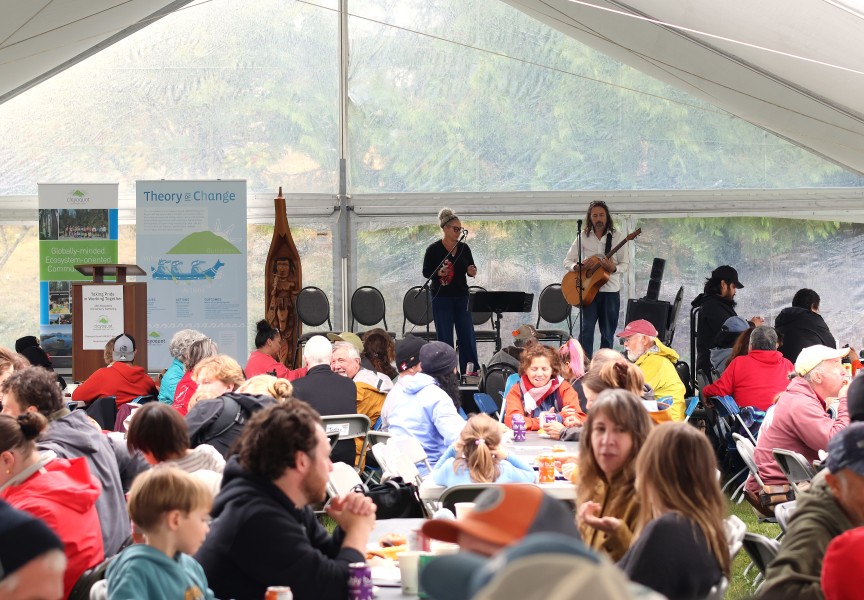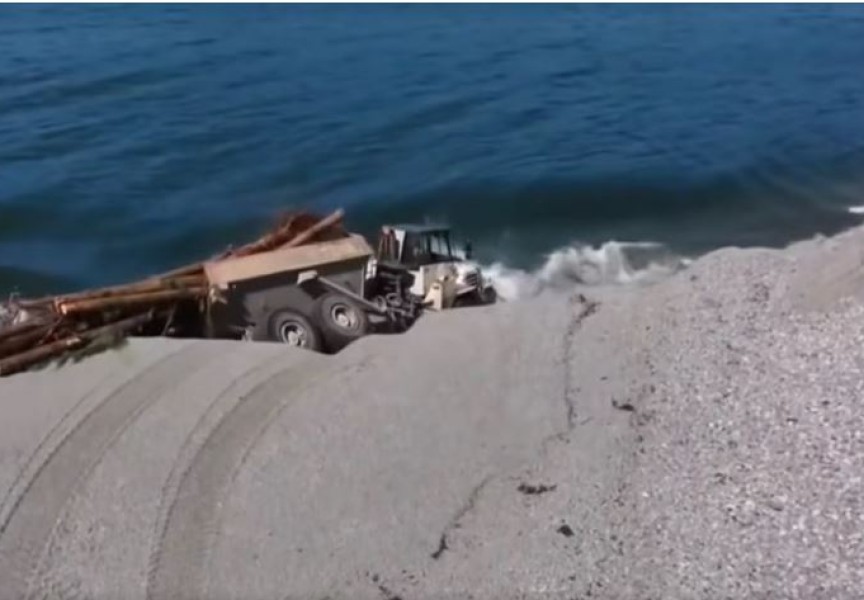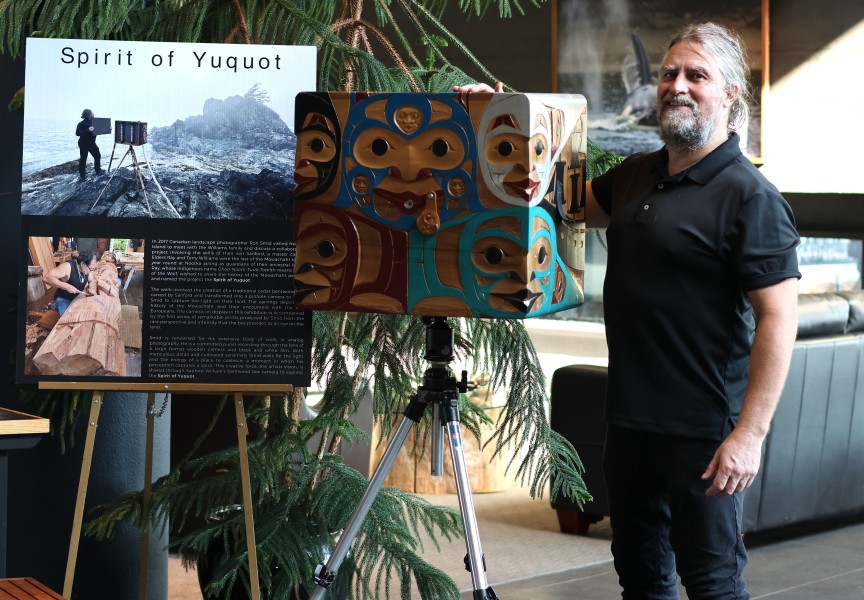“Welcome home. It’s good to see you… I’m Grandpa,” said Pat Charleson Jr., sitting around a fire at Hesquiaht on Aug. 3.
He was greeting his young relatives who he had never met before. The children, in the care of Usma, the Nuu-chah-nulth Tribal Council’s child and family services department, had come to visit the Hesquiaht homeland that day. It was the first time the children had stepped foot on their ancestral territory and, by and large, the first time they had met members of their extended family.
See our photos: http://www.hashilthsa.com/gallery/hesquiaht-home-coming-kids-care
“I’m so happy to see you guys… I want to welcome every one of you,” Pat said.
The day for the kids, 16 of 21 who are either registered or entitled to be registered with Hequiaht First Nation, began in the early morning in Port Alberni.
Accompanied by their social workers or foster parents, they traveled an hour-and-a-half to Tofino, then got aboard water taxis to travel another two-and-a-half hours over choppy seas to get to Hesquiaht on the West Coast.
Once in Hesquiaht, the children were greeted by Ha’wilth (hereditary chief) Steve Tom, who welcomed the children to the home of the Hesquiaht people.
The women could be heard singing down the beach, so the visitors were walked toward the sound, and were greeted by a celebration song; ladies and children waving cedar flags and sprigs of cedar bough as they danced.
See our video here: https://www.youtube.com/watch?v=AaUuqKxgvoY
Charlie Lucas, who celebrated his 89th birthday during Hesquiaht Days (held during the week leading up to the visit) stood to talk to the children.
He first spoke in his Hesquiaht language, and then said in English: “Children, I welcome you to our village. Some of your grandparents, your great-grandparents are from here. You are always welcome to be here. Enjoy your visit. We will make sure the people make you comfortable, make you happy. It’s great that you are here.
“Young people, we thank the Creator for your visit. Thank the Creator for the weather. Young people, young children, enjoy your stay. The people will make you happy, give you happiness. Welcome, welcome to our village—your village.”
A very old and special song was sung that told the story of Hesquiaht whalers who were towed far out to sea by a whale they had harvested, explained Linus Lucas. The whalers didn’t know how they were going to get back home. Then a bird landed on the whale. One of the whalers began to chant, and “the whale came alive”, and towed them back home to their territory.
“I thought we should sing this because we’re bringing them (the children) all back home.”
With another song, the children were invited to dance, and given the cedar flags or cedar boughs as they twirled in the sand and whooped in celebration. Their joy demonstrated by their wide, bright smiles.
The children were then invited to a barbecue, and were stood up to be honored. Linus Lucas and Nicole Charlie introduced the children by sibling group. Linus connected each child to a house, or family group.
Nicole Charlie is Usma’s Leader of the At-Home Team. She said it’s important for children in care to know where they come from, who their family is, where their roots are.
“To put faces to family. Not just knowing, but actually seeing and having them step foot on their land to make that connection.”
Ruth Charleson is a Hesquiaht band councillor who holds the child welfare portfolio. She is a retired social worker who has seen the benefits of connecting kids in care to their families.
“I have worked with children as a social worker whose eyes are so hollow. They don’t know where they belong. And then the minute I introduce them to a family member, the family member just hugs them and accepts them as their family, their eyes change. They come alive to know that someone is out there, loving them and caring for them,” said Ruth.
“It’s amazing. It totally warms my heart,” said Nicole. “It just feels so good to see the children return home, and their faces and the family. It feels really good.… I just couldn’t imagine the place that they are in, themselves, not knowing necessarily where they come from and to see it; it’s so joyous and overwhelming.”
Ruth said the children now know where they belong. And the Hesquiaht Nation has acknowledged them and told the children that they care for them and now know who they are.
As the relationship develops over time, said Ruth, the children will get to know their history, and learn their family stories.
And it’s the goal of both Usma and Hesquiaht to grow the connections made on this first visit, making the trip an annual event for the Hequiaht children in care, with the older children perhaps joining the week-long campout at Hesquiaht.
Ruth said it was hard to put into words what she was feeling, seeing the children at home.
“I can feel it in here,” she said putting her hand on her heart. “It’s very emotional… It’s like when you haven’t seen your children for a long time and they come home. It’s that feeling as a parent that comes alive… And it doesn’t matter who the parents are, they are our children. …you want to bawl your eyes out and hold on to them.”
Nicole said now the families have met their children that are in care, it’s possible that some may step forward so the children can return home. That can happen in a variety of ways, including being a host home, a safe home, where the children can spend time for a weekend or a week among their Nuu-chah-nulth family members. Some of the children have spent their whole lives in the care of non-Nuu-chah-nulth people.
Usma is making progressive efforts to reconnect children with their home communities. More kids are getting home this summer, in fact, than ever has been done before in the Usma-based program. Ahousaht, Hesquiaht, and Tla-o-qui-aht have planned homecomings this summer, and some children in care will be attending the Northern Region Games in Kyuquot at the end of August.
Priscilla Sabbas-Watts, a Hesquiaht band councillor, was able to connect with three of her close relatives.
“Seeing them come (home), it was so powerful,” she told Ha-Shilth-Sa. Priscilla was 15 when she visited the remote Hesquiaht for the first time. She understood what the kids might be feeling seeing this place.
“I’m sure something stirred in all of them. … How many people get to go home to where their ancestors are from, where they are absolutely from?”
She said she feels so connected to family while in Hesquiaht, sitting on the beach, eating seafood and talking with her aunts and uncles, just as her ancestors would have done in the long-ago past.
The family connections, once they are made, fall into place and the connections are forever, she said. And the young visitors will have the stories with them as they grow older. She’s hoping that some of the older children will be able to spend Hesquiaht Days with family next year, hauling water and using the outhouses and going out to the ocean for seafood.
And to learn to feel good about being Hesquiaht, being Nuu-chah-nulth and being First Nations. Some of the kids who have lived in the urban centres may have been overtaken by stereotypes about their people. To come home and see all these healthy role models would be really empowering to them, Priscilla said.
Priscilla works with Grand Chief Ed John who is the special advisor to the minister of Children and Family Development in British Columbia. John is writing a report on permanency, or forever homes, for children in care across the province with the goal of bringing kids home to their territories and keeping kids home.

